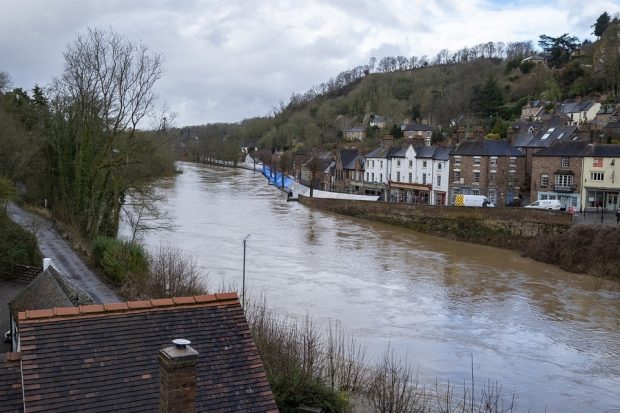
Today, 25 pioneering projects have received a share of £150 million of funding to put new aspects of the National Strategy for Flood and Coastal Erosion Risk Management to the test.
We’re doing this because the world is changing and we need to get ahead of that change. By 2050, there is likely to be 59 percent more winter rainfall, and by the end of the 21st century, once-a-century sea level events are expected to become annual events. Alongside climate change, the population continues to grow. We need to continue to build defences while innovating new ways to make the nation resilient.
In the summer last year, the Environment Agency published a National Strategy for Flood and Coastal Erosion Risk Management to 2100. It seeks to adopt a range of innovative flood and coastal resilience measures: from the construction of flood defences, river channel maintenance and sustainable drainage systems, to nature based solutions, property level resilience and alternative land management practices. But, crucially, it does not operate a “top down” approach. We will work with local communities to identify the best combination of measures that tackle the unique risks experienced in specific places.
Today we launched the Flood and Coastal Resilience Innovation Programme, which will see 25 pioneering projects across England receiving a share of £150 million of funding to put new aspects of the strategy to the test. What we learn will inform our approach to the climate crisis in the coming decades.
We have innovative projects from local authorities and partners, covering all sources of flood and coastal risk across England, including rural and urban communities. I have found it inspiring to see the focus on nature based solutions, innovative financing to fund flood risk management and cutting edge technologies to better forecast and better prepare for flooding. Some examples include:
- restoring tidal habitats such as kelp beds, oyster reefs and sea grass meadows, to protect against coastal erosion and flooding,
- making space for sand dunes to defend coastal communities from erosion while restoring ecosystems for plants and wildlife,
- establishing a ‘habitat bank’ where opportunities for habitat improvement can be traded with local partners to generate income, improve resilience to coastal change and contribute to economic regeneration,
- capturing surface water during periods of floods to recharge groundwater and reuse in agriculture, to improve local water security in rural communities
- using artificial intelligence to forecast and map flood events to boost community resilience through an accessible web platform.
I’m particularly interested in the projects that test the ability of nature-based projects to generate revenue. If successful, these could be scaled up by private finance around the world, helping to prepare for climate shocks, restore nature and create jobs. The learning from the programme will provide tangible, local and regional examples of our nation’s work on climate adaptation, and is something to share with international partners at the UN Climate Change Conference in Glasgow this year.
Success
Last week we allowed ourselves a brief moment of celebration as we completed the Government’s 6 year, £2.6 billion flood and coastal erosion programme. That means 700 projects better protecting 300,000 homes, nearly 600,000 acres of agricultural land, thousands of businesses and major pieces of infrastructure. A major infrastructure project on time and within budget. But it’s not all about the numbers, the sense of security these protections bring to people, and the benefits to nature, can’t easily be demonstrated on a spreadsheet. Now we are getting on with this Government’s huge £5.2 billion capital flood programme to better protect 336,000 properties, including homes, businesses and hospitals.

1 comment
Comment by Kev Draper posted on
There may be a way of easing floods in rural areas thus providing a way for someone to come up with a plan to use the contained water for agricultural purposes this defence strategy in my belief could ease the fear of flooding in several places that have suffered over the last few years and many other areas.
In some cases it would obviously need the co-operation of farmers and land owners but I believe my idea could work and not put a blot on the landscape at any point.
I don’t know maybe it’s been thought of already but I can’t find anything anywhere.